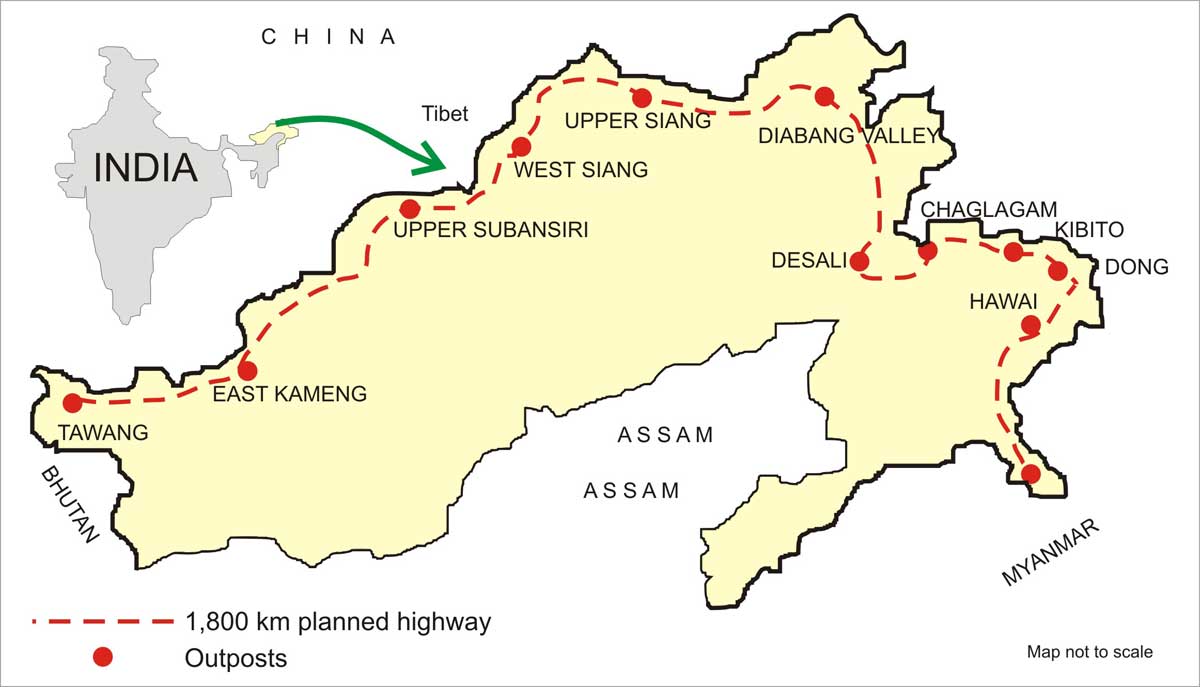IDR Blog
Why the India-China Border Issue Remains Intractable
 Why is the Sino-Indian border dispute considered intractable in nature? Will it become more/less resoluble in the near future?
Why is the Sino-Indian border dispute considered intractable in nature? Will it become more/less resoluble in the near future?
This commentary examines the conditions for its resolution, derived from past research on border disputes, bargaining, and negotiations in international relations. It considers three conditions for resolution: 1) If neither country sees an interest in continuing this conflict 2) If the contours of the resolution seem like a win-win scenario for nationalist-realists on both sides, and 3) if both sides have the ability to make reneging on an agreement a costly affair.
First, China has likely calculated that it is more logical to wait out the current border status quo to arrive to a more beneficial deal in the future. This is due to the interest in a swift resolution seeming to be more from India’s side given its relatively weaker position based on military strength and economics. China’s growth projection for 2020 is 6-6.5 per cent. India’s economy grew quicker in 2018-19 (by 7 per cent), and is expected to steadily grow at around 7.5 per cent over the current and next two financial years. However, this belies the sizeable difference between their GDPs: China’s GDP for 2018-19 was US$ 13.6 trillion, while India’s GDP for the same year was US$ 2.72 trillion (approximately 5 times less than China’s). Therefore, China’s gains from a 6 per cent growth are substantially greater than India’s gains from a 7 or 7.5 per cent growth. China is therefore increasing its economic differential relative to India.
Domestically, there have also been questions about the resilience of the Indian economy including concerns that India’s GDP measurements are unsound, resulting in an inflated figure and lending a measure of uncertainty to projected growth estimates. In terms of military spending, data put out by the Stockholm International Peace Research Institute (SIPRI) shows China’s military spending to be US$ 250 billion in 2018-19, while India’s was US$ 66.5 billion. This paints a clear picture of the military-economic power differential between India and China. Since China is growing more powerful over time in military-economic terms, waiting out the status quo to arrive at a future resolution is a rational option.
Second, there is serious doubt about whether a “win-win” narrative can ever emerge for nationalists on both sides given the present scenario. Territorial integrity is a central driver to India’s national identity ever since Indian Independence in 1947. Indian society is extremely diverse in terms of regional cultures, religions, ethnicities, and linguistics. In this context, the belief in the sanctity of India’s territoriality aids the conception of an Indian nationality and what it represents. Historically, however, India has come to territorial resolutions which resulted in a net loss of territory. One instance is the 2015 India-Bangladesh land swap agreement, and another is the 1976 agreement which granted the previously disputed Katchatheevu Island sovereign recognition by India as a Sri Lankan island. (Officially, India does not recognise this as “ceding” territory).
Conversely, China’s history of treaties (examples include Tajikistan, Russia, Myanmar and Pakistan) points to a trend in which Beijing only seems to accept territorial dispute resolutions that result in net territorial gain for China. The projection of historical wrongs using Ming and Qing era maps makes territorial concessions difficult for China without ‘loss of face’. In fact, even a resolution involving acknowledgement of the current territorial status quo could be painted as a narrative of Chinese concession, triggering external observers (states like Brunei, the Philippines, Indonesia, Malaysia, the US) to demand withdrawals and concessions elsewhere in the South China Sea (SCS). This is a circumstance Beijing does not want to entertain as the SCS is a core maritime interest.
Beijing also likely believes that India is the more flexible party in bilateral border negotiations based on precedent. This perception therefore may lead them to expect a future agreement that results in net territorial gain. However, this belief would be a miscalculation on China’s part. The existence of territories (Aksai Chin, Demchok) claimed by India and controlled by China results in a scenario in which India would be unwilling to come to a resolution that contributes to territorial concessions to China.
Third, even if a land border agreement was reached, how could India guarantee its enforceability? China will be secure that India will not renege on a land boundary agreement due to its superior military and economic standing which enables swift and effective reprisal. India does not share this same security, and is more wary of China reneging on an agreement. India has also noted China’s territorial encroachments into Nepal, Bhutan, and India (prominent cases include the case of almost a thousand troops entering Ladakh’s Chumur sector in 2014, and a stand-off in Sikkim in 2017) and is therefore unlikely to trust that any agreement made will stand firm. This lack of trust and India’s unequal ability to enforce any possible resolution solidifies the intractability of the dispute.
The discernible imbalance in the India-China power differential, past history and current nationalism, core interests, and lack of mutual trust operate in a matrix and reinforce the intractability of the border issue. Projecting from these current conditions, it does not seem likely that there will be a land border resolution between the two states in the near future. Unless there is a foundational change in bilateral relations involving a substantial increase in India’s military-economic capacities and a reversal in Beijing’s negotiating approach, the status quo is projected to continue.
Courtesy: http://www.ipcs.org/comm_select.php?articleNo=5601




